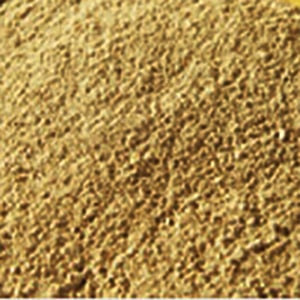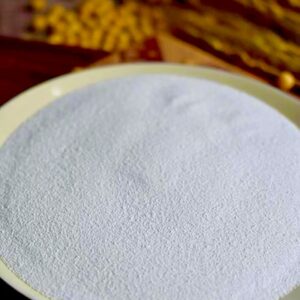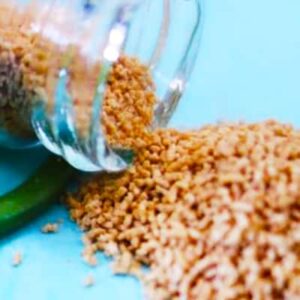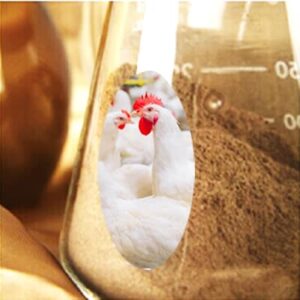Product Video
Product Introduction
Product Description
Low utilization of animal feed protein can lead to undigested protein fermentation in the hindgut to produce harmful substances such as hydrogen sulfide, ammonia, and methyl phenol, which not only affects the intestinal health of animals, causes diarrhea and reduces production performance, but also aggravates the environmental pollution caused by the farming industry. Improving the digestibility of feed protein is an important measure to solve this problem. Acid protease, derived from Aspergillus niger strains, can effectively hydrolyze proteins under low pH conditions and is used in the feed industry as an exogenous enzyme in animal feeds, feed additives, and feed compositions, or for processing vegetable proteins. The active center of acid protease contains aspartic acid, which can extensively sever peptide bonds in amino acids, preferring to sever peptide bonds between aromatic or hydrophobic amino acid residues at both ends, especially between aromatic amino acids and other amino acids, producing small peptides and amino acids.
Feed enzymes are produced by microbial fermentation and are added to feed to improve digestion and utilization of feed or improve metabolic efficiency in animals. Enzymes that can be added to feed include Protease Mix, Thermostable Phytase, Highly Efficient Phytase, NSP Enzyme, Lipase, Pectinase, Cellulase, α-Amylase, Alpha- Galactosidase, Beta-Glucanase, Glucose Oxidase, Thermostable Acid Protease, Acid Protease, Thermostable Acid Beta-Mannanase, Beta-Mannanase, Xylanase, etc.
About 70% or more of poultry sticky wheat rations worldwide have enzymes added to them, and nearly 90% of poultry feeds in Europe contain enzymes.
Enzyme preparations are divided into three main categories:
Non-starch polysaccharidases
Non-starch polysaccharide enzymes include xylanase, β-glucanase, β-mannanase, cellulase, α-galactosidase, pectinase, etc., which act on the corresponding NSP in the feed. livestock and poultry do not secrete this type of enzyme and must be added exogenously from the feed, which is the main enzyme preparation for feeding.
Phytase
Phytase has a special spatial structure that sequentially separates phosphorus from phytic acid molecules and degrades phytic acid (salt) into inositol and inorganic phosphorus while releasing other nutrients bound to phytic acid (salt).
Endogenous digestive enzymes
Endogenous digestive enzymes are enzymes that can be secreted by the animal’s digestive tract itself, mainly proteases, amylases, and lipases. In some special cases, endogenous enzymes also need to be supplemented by the feed.
Product Feature
PH and Temperature:
Acid protease’s optimum reaction pH is low, and basically coherent with the digestive system of livestock and poultry. Make up for a lack of livestock and poultry intestinal secretion of endogenous protease, improve protein digestibility, and reduce metabolic diarrhea when used in feed additives. The effective pH range is 2.0 to 6.0, the optimum pH is 4.0.
When the temperature is lower than 30℃ or higher than 45℃, the relative enzyme activity decreases obviously. The effective temperature range and the optimum temperature are 35-40℃, and 40℃, respectively.
Product Parameter
The recommended dosage is based on 50,000 U/g
| Species | Recommended Dosage
(g/MT of complete feed) |
| Young livestock | 20-50 |
| Growing livestock | 10-30 |
| Broilers | 20-40 |
| layers | 10-30 |
Species: Poultry or Livestock
Activity: 10,000 U/g~50,000U/g.
Appearance: Brown powder
CAS number: 9025-49-4
Package:25 kg/ bag
HS Code: 2309901000
Usage and Storage:
Keep away from the moisture and avoid storing it in a high-temperature environment.
Seal both internal and external packages after use.
12 months from the date of production under proper conditions in a dry well ventilated and cool place.
FAQ
A: No, according to customer needs.
A: The professional QC team will control the quality of the goods during all mass production, or if you wish, you can arrange a third-party inspection service. We will provide bulk samples for evaluation before shipment.
A: The sample is free, but the freight is payable. Please contact us in advance if you need samples. You can prepay shipping charges via PayPal or Western Union, and we will send samples as soon as we receive your shipping charges. Or you can provide your courier (DHL, TNT, etc.) account to us for pickup.
A: We can provide customers with full supervision of the procurement process and deliver the most satisfactory goods to them.
Accept delivery terms: FOB, CFR, CIF, EXW, CIP, DDP, express; Accept payment currencies: US dollars, Euros.
A: Yes, we do. We are a professional company in livestock farm products. We have a professional and strict quality control, we must provide you the best service for your need. Our product service department will keep in touch with customers and reply at any time.
Yes, we accept ordering samples to check quality. And mixing samples is acceptable.
A: For preparing samples, depending on the number of samples and process requirements, our preparation time is 1-7 days. International express delivery time is 3-7 days.
Related products
-
Animal Feed Additive Products
Tricalcium Phosphate TCP Feed Additive
-
Animal Feed Additive Products
Animal Feed Additive Liquid Tributyrin
-
Butyric Salts And Formic Acid salts
Livestock Feed Additive 60% Powdered Tributyrin
-
Feed Enzyme
Feed Additive Protease Mix
-
Feed Enzyme
Feed Additive NSP Enzyme
-
Feed Enzyme
Feed Additive Feed Enzyme Lipase
-
Feed Enzyme
Feed Additive Feed Enzyme Pectinase
-
Animal Feed Additive Products
Animal Saccharomyces Cerevisiae Culture









